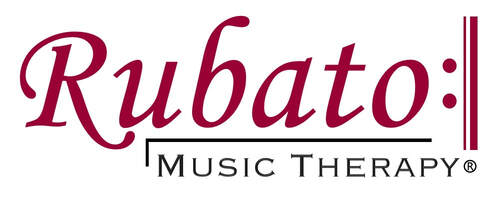Welcome to the Rubato Music Therapy Blog!
A resource for music therapists, music educators, and other professionals who work with individuals with intellectual disabilities, as well as their families and care providers.
|
Perhaps you are an elementary music teacher, or perhaps you are a music therapist with a client who is interested in playing the recorder. Either way, you have found yourself looking for a recorder method. After comparing recorder methods at the local Music & Arts with those that I've previously purchased, I recommend It’s Recorder Time by Alfred d'Auberge and Morton Manus for the following reasons: PacingThe most significant aspect of It’s Recorder Time is the book's pacing regarding eighth notes. Other recorder methods that I reviewed (including Essential Elements by Kaye Clements, Paul Lavender, and Charles Menghini) introduce eighth notes relatively early and continue to emphasize them in the majority of pieces thereafter. It’s Recorder Time introduces more notes before introducing eighth note rhythms, enabling players to expand upon their melodic capabilities before challenging their rhythmic capabilities. After introducing eighth notes, It’s Recorder Time incorporates them sporadically in other pieces, allowing students to continue to progress in learning notes and new pieces even if they struggle with rhythms. A quick disclaimer: my degree is in music therapy and I am a music instructor, but I do not have a degree in music education nor a teaching credential. From what I have observed in my experience with youth and adult students with disabilities, rhythm can be a difficult concept to master cognitively or physically in terms of motor planning and coordination, and some students have trouble synchronizing to a pulse or maintaining a steady beat. For these students, being asked to play at a faster tempo or utilize subdivisions that are perceived as “faster” (for all intents and purposes) increases the level of difficulty. Drastically slowing the tempo to accommodate the student, although advisable for success when necessary, can also distort the listener’s recognition of a piece and perception of the performance. For perspective across instruments, Piano Adventures (which I recommended in an earlier blog post) doesn’t introduce eighth notes until the third book in its series, which translates to approximately the third year of instruction. Supplementary MaterialAnother benefit of this book is that it features many duets, which can be played by the student and teacher, or by the beginning student and a more advanced student. This is beneficial in teaching students how to play together and listen while having confidence in their own part. The other book in this series features holiday solos, duets, and trios. CONSThe one downside to this book is that the print is rather small and can be difficult to see. However, in general, my students who read sheet music for piano can read the notation in this book, and my students who use visual adaptations for piano (such as writing the letter names above the notes) use those same adaptations for recorder Where to BuyYou can buy It's Recorder Time here: https://www.musiciansfriend.com/books-sheet-music-media/alfred-its-recorder-time-book/902166000000000 for less than $5.
0 Comments
Your comment will be posted after it is approved.
Leave a Reply. |
AuthorKirstie Gallacher-Ang, MT-BC Archives
June 2020
Categories
All
|
Hours |
Call or Text |
|
|
Please contact for current availability.
|
(714) 364-7561
|
